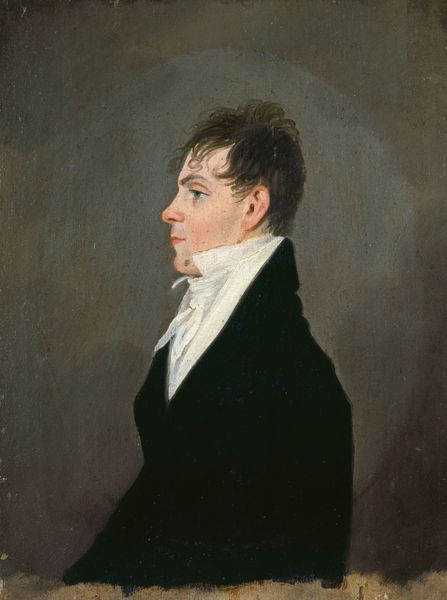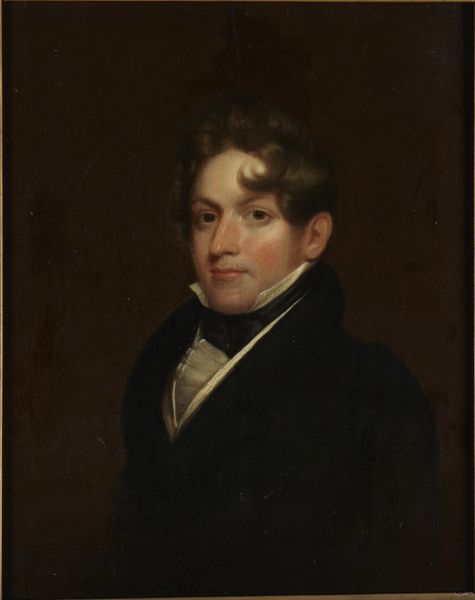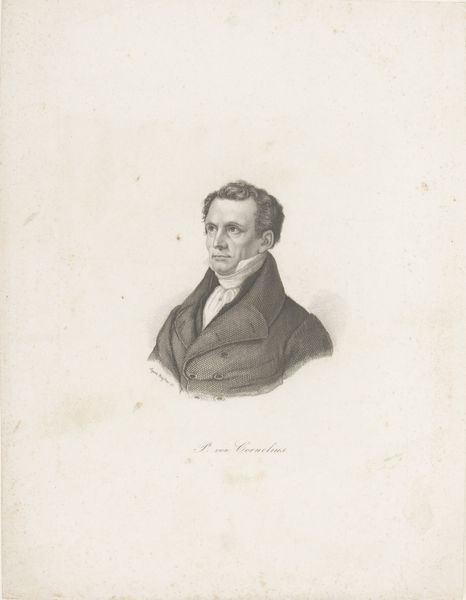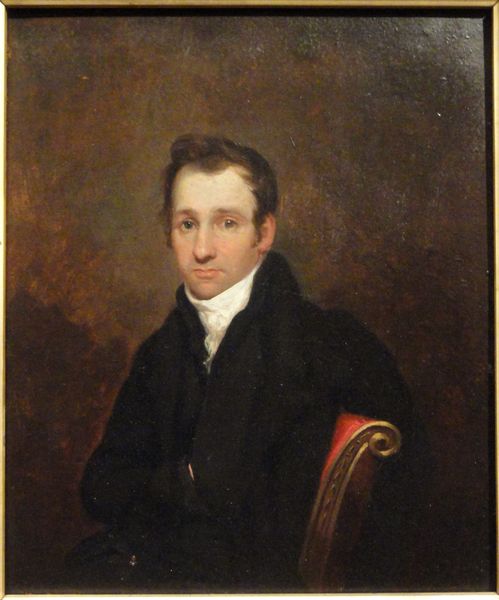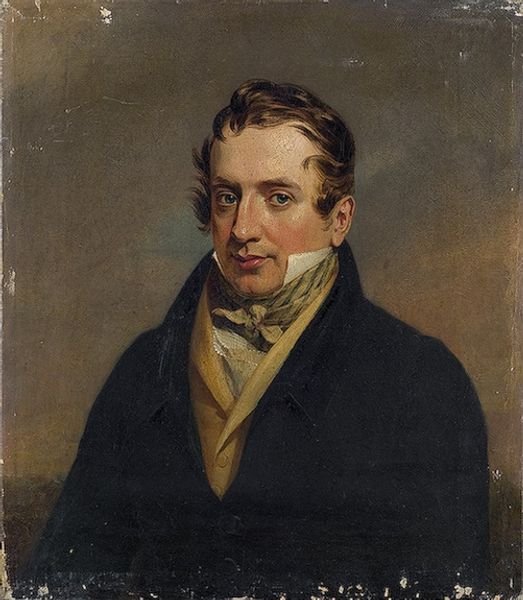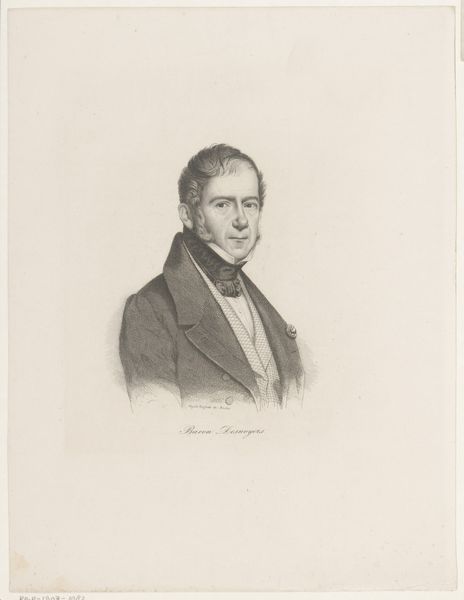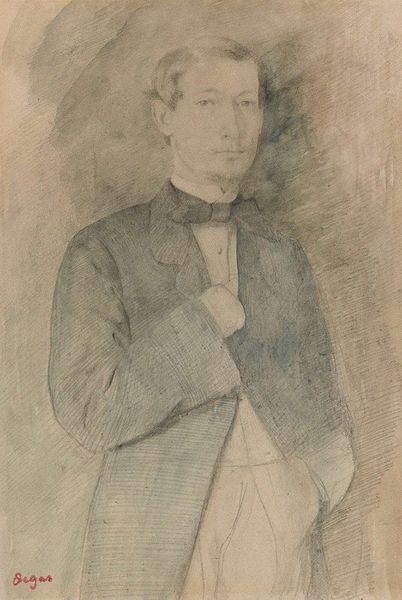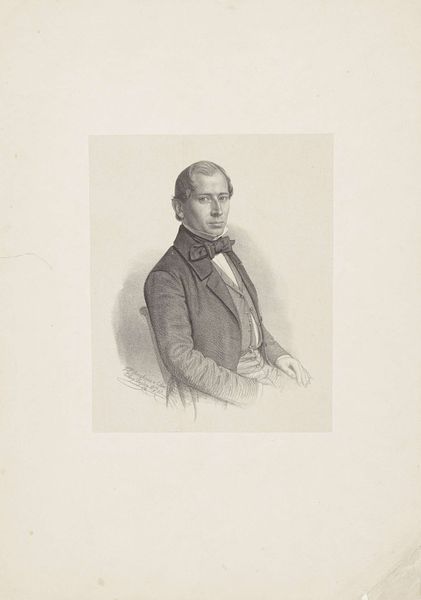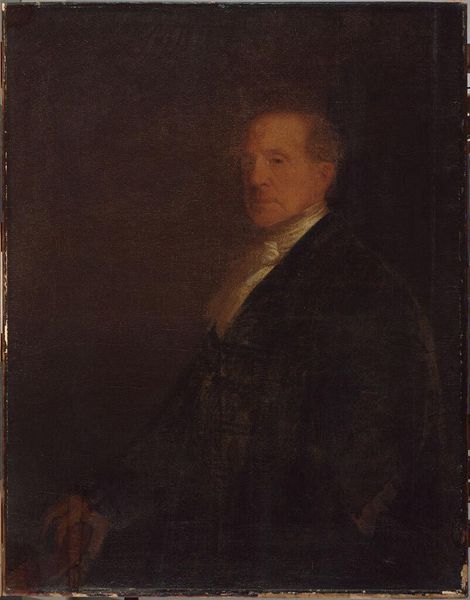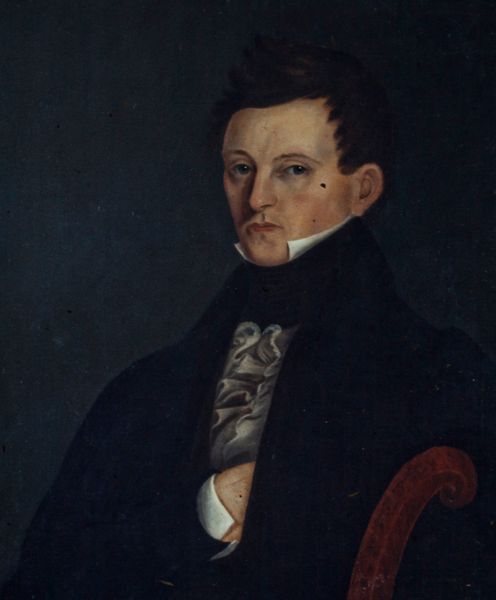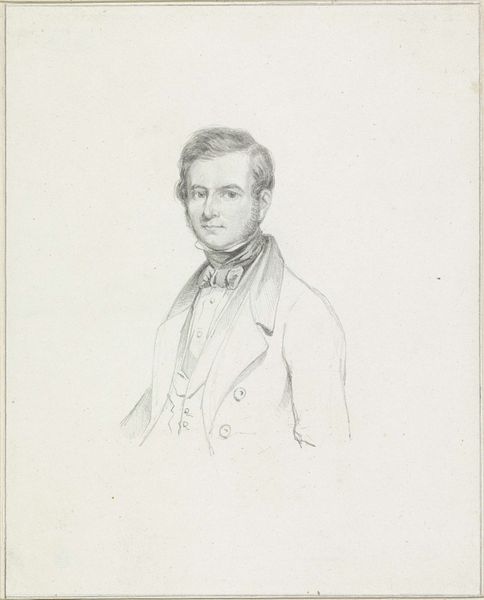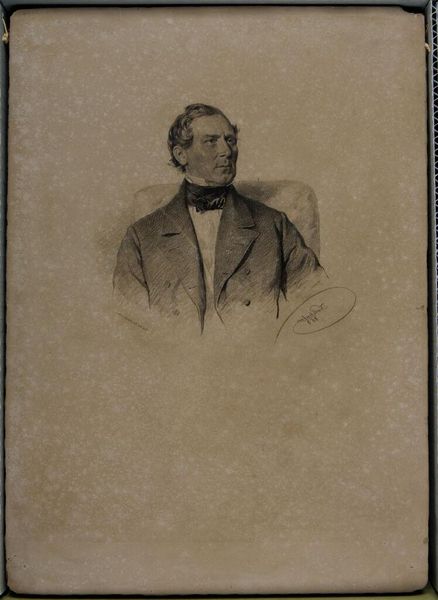
oil-paint
#
portrait
#
oil-paint
#
oil painting
#
romanticism
Dimensions: overall: 22.9 x 17.5 cm (9 x 6 7/8 in.) framed: 33.7 x 28.6 x 4.3 cm (13 1/4 x 11 1/4 x 1 11/16 in.)
Copyright: National Gallery of Art: CC0 1.0
Curator: Standing before us, we have "Jacob (?) Leman," a portrait executed around 1808 by Jacob Eichholtz using oil paints. What strikes you upon first glance? Editor: Immediately, I’m drawn to its intimate scale and rather somber mood. The man’s profile seems quite serious, almost burdened. The dark, muted tones contribute to this feeling; there’s very little light play happening on the face or within the composition overall. Curator: Precisely, these subdued colors and the sitter's earnest expression are typical of portraiture during the Romantic era. These portraits were frequently commissioned as a display of the sitter's rising status, solidifying the role of art as a marker of success within increasingly bourgeois society. Eicholtz enjoyed great popularity and prolificness at the time. His paintings depict leaders in commerce and science as a type of meritocratic aristocracy. Editor: The tight composition certainly frames him as a man of consequence. Considering this in our contemporary landscape, I immediately ask what implications the construction of gender and power were for those marginalized by this type of elite positioning. Who was denied access, denied representation, during this time? Curator: It is imperative to view artwork like this within the totality of historical record; Eicholtz operated within the complex dynamics of early 19th-century America. By studying his commercial connections and examining census data, one can ascertain the complex intersectionality of opportunity afforded and withheld, along lines of commerce and class. What appears as simply a biographical document—a static portrait—really stands as a symbol for a particular socio-political environment, an insight into how identities and roles were being constructed and performed at the time. Editor: Exactly! Thinking critically about what histories are presented through art is necessary work, and it goes far beyond basic recognition. We've analyzed it by putting it into our specific sociopolitical situation; now it sparks questions about equality, representation, and accessibility. Curator: Yes, while Jacob Leman the painting offers a singular, historical perspective into early America, our engagement allows us to contextualize how notions of power, status, and ultimately, identity are continuously negotiated across historical eras.
Comments
No comments
Be the first to comment and join the conversation on the ultimate creative platform.
